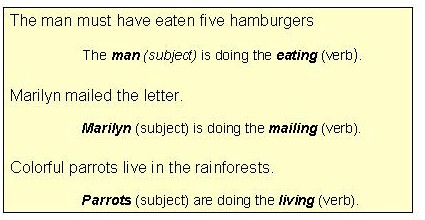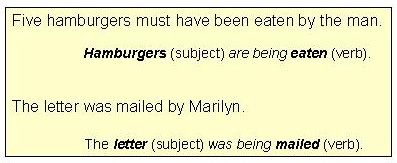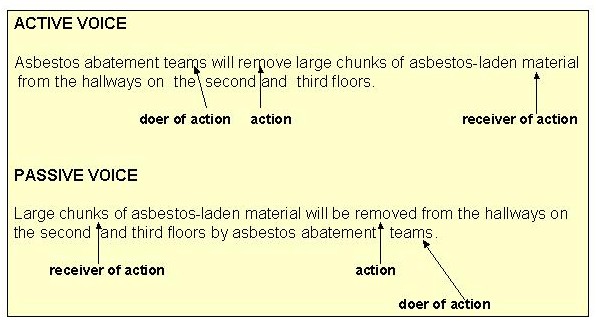Nama : Kartika Puspa Sari
NPM : 23216827
Kelas : 3EB12
PRESENT TENSE
- SIMPLE PRESENT TENSE
Usage:
Stating a habit (habitual action) or activities that occur over and over - again and again and again. Stating a general truth.
Formulas :
(+) S + V1 + es/s + Object
(- ) S + do/does + not + V1 + Object
(? ) do/does + s + V1 + Object?
Examples:
- My sister lives in Bali Luhur.
- My sister does not live in Palembang.
- Does my sister live in Jakarta ?
- PRESENT CONTINUOUS TENSE
Usage:
To declare an ongoing activity (now) or around the time of the conversation (around the time speaking).
Formulas:
( + ) s + is/am/are + V – ing
( - ) s + is/am/are + not + V – ing
( ? ) is/am/are + s + V – ing
Examples :
- I’m studying structure now.
- I’m not studying Indonesian now.
- Am I studying Math now ?
- PRESENT PERFECT TENSE
Usage:
To declare an act, events that happened in the past and still nothing to do with present or to show an event that completed in a short time (just finished).
Formulas :
( + ) s + have/has + V3 + Object
( – ) s + have/has + not + V3 + Object
( ? ) have/has + s + V3 + Object ?
Examples :
- Winny has eaten lunch.
- Ketut has not eaten lunch.
- Has Nopri eaten lunch ?
- PRESENT PREFECT CONTINUOUS TENSE
Usage:
to declare an activity that started in the past and is still ongoing and there may still be ongoing
Formulas:
( + ) s + have/has + been + V – ing
( – ) s + have/has + not + been + V – ing
( ? ) have/has + s + been + V – ing ?
Examples :
- Jack has been staying in hospital since his accident
- Jack has not been staying in hospital.
- Has jack been staying in hospital since his accident ?
PAST TENSE
- SIMPLE PAST TENSE
Usage:
To express an activity that occurs at a point in the past.
Formulas:
( + ) s + V2 + Object
( – ) s + did + not + V1 + Object
( ? ) did + s + V1 + Object?
Examples :
- My father went to France last year.
- My mother did not go to France .
- Did my sister go to France last year ?
- PAST CONTINUOUS TENSE
Usage:
To express an ongoing activity in the past when other activities occur / interrupt.
Formulas:
( + ) s + was/were + V – ing
( – ) s + was/were + not + V – ing
( ? ) was/were + s + V – ing ?
Examples :
- I was reading book when father watched TV.
- I was not eating when my mother ate lunch.
- Was I studying when my friend invited me ?
- PAST PERFECT TENSE
Usage:
To declare an act that is completed events done in the past or explain an events which first occurred between the two in question.
Formulas :
( + ) s + had + v3
( – ) s + had + not + v3
( ? ) had + s + v3
Examples :
- Rina had eaten when we called at to her house.
- Tina had not come when I called her.
- Had Tina heared when I called her ?
- PAST PERFECT CONTINUOUS TENSE
Usage:
To declare an act or event that has been started in the past and is still going on in the past also.
Formulas:
( + ) s + had + been + V – ing
( – ) s + had + not + been + V – ing
( ? ) had + s + been + V – ing ?
Examples :
- They had been singing when we studied dancing.
- They had not been eating when we ate lunch.
- Had they been studying when we studied English ?
FUTURE TENSE
- SIMPLE FUTURE TENSE
Usage:
To declare an act or event that will be done at the time will come.
Formulas:
( + ) s + shall/will + V1
( – ) s + shall/will + not + V1
( ? ) shall/will + s + V1
Examples :
- I will go to Surabaya tomorrow.
- My mother shall not follow me.
- Will you follow me ?
- FUTURE CONTINUOUS TENSE
Usage:
to declare an act or event that will be taking place at a time will come.
Formulas:
( + ) s + shall/will + be + v – ing
( – ) s + shall/will + not + be + V – ing
( ? ) shall/will + s + be + V – ing
Examples :
- I will be studying if Winny come to night.
- My young brother shall not be sleeping if my mother isn’t there.
- Will they be going ?
- FUTURE PERFECT TENSE
Usage:
To declare an act or event that already started in the past and soon to be completed in time dating.
Formulas:
( + ) s + shall/will + have + V3
( – ) s + shall/will + not + have + V3
( ? ) shall/will + s + have + V3
Examples :
- Tom and Tim will have finished their work by Monday.
- Tom and Tim will not have finished their work by Sunday.
- Will They have finished their work Tuesday ?
- FUTURE PERFECT CONTINUOUS TENSE
Usage:
To declare an act or event that already exist in the past but it is still possible to dillanjutkan at the time will come.
Formulas:
( + ) s + shall/will + have + been + V – ing
( – ) s + shall/will + not + have + been + V – ing
( ? ) shall/will + s + have + been + V – ing
Examples :
- My father shall have been working in the office for five years by the end of the year.
- My mother shall not have been cooking.
- Shall she have been cooking ?
PAST FUTURE TENSE
- SIMPLE PAST FUTURE TENSE
Usage:
To declare an act or event that will come done in the past.
Formulas:
( + ) s + should/would + V1
( – ) s + should/would + not + V1
( ? ) should/would + s + V1
Examples :
- My parent would give me a new book the week before.
- They would not give me a new book the next day.
- Would they give me a new car the week before ?
- PAST FUTURE CONTINUOUS TENSE
Usage:
To declare an act or event that will be taking place the past.
Formulas:
( + ) s + should/would + be + V – ing
( – ) s + should/would + not + be + V – ing
( ? ) should/would + s + be + V – ing
Examples :
- We would be meeting here at five yesterday.
- We would not be meeting here at four yesterday.
- Would us be meeting here at five yesterday ?
- PAST FUTURE PERFECT TENSE
Usage:
To declare an act of events that will come already in the past supposition that can not happen because it is definitely not fulfilled.
Formulas:
( + ) s + should/would + have + V3
( – ) s + should/would + not + have + V3
( ? ) should/would + s + have + V3
Examples :
- You would have been success if you had worked hard.
- You would not have been success if you had not worked hard.
- Would you have been success if you had not worked hard ?
- PAST FUTURE PERFECT CONTINUOUS TENSE
Usage:
To declare an act of events that will already be in progress at
the past.
Formulas:
( + ) s + should/would + have + been + V – ing
( – ) s + should/would + not + have + been + V – ing
( ? ) should/would + s + have + been + V – ing
Examples :
- My brother should have been working there for two years by the end of this year.
- My sister should not have been working there.
- Should Zidan have been studying at Tridinanti for 2 two years by the end of this year ?













